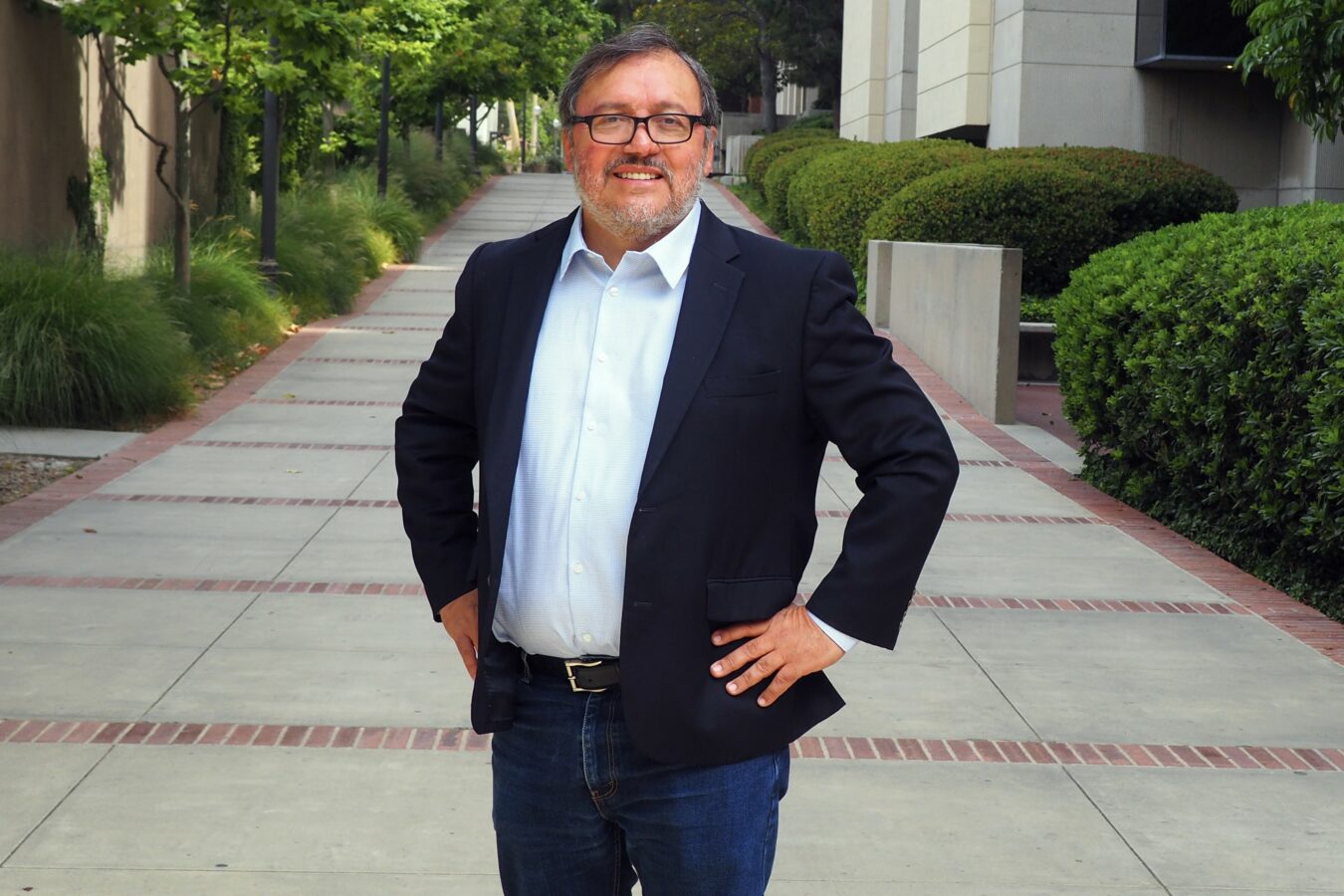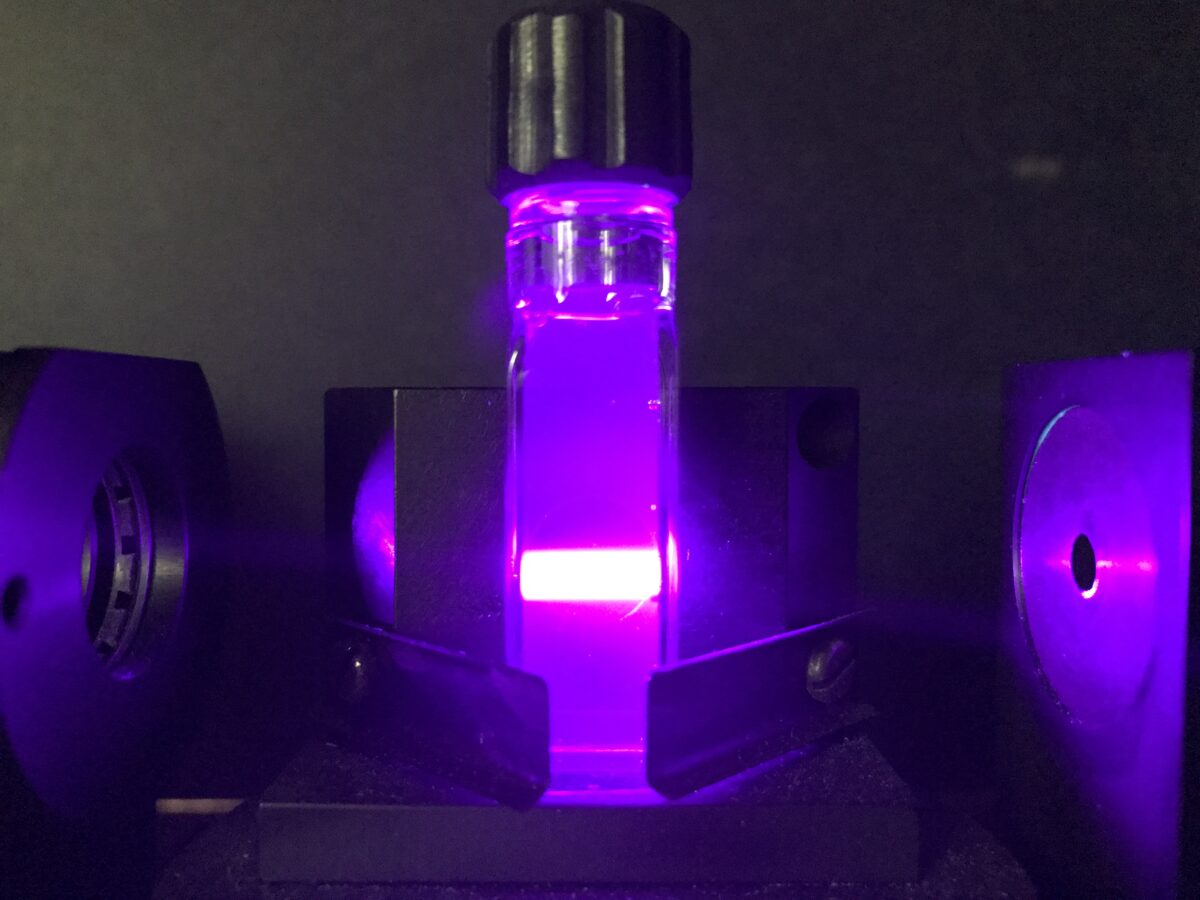When people think of researchers who are pushing the frontiers of quantum science forward, they probably look for applications in quantum computing, quantum sensing, quantum cryptography and other aspect of information science. But quantum phenomena can also have deep implications in the field of chemistry, as shown by new research from Miguel García-Garibay, distinguished professor of chemistry and the dean of UCLA’s division of physical sciences.
What García-Garibay did was to take advantage of an emergent area of chemistry and apply it to a process called a quantum chain reaction.
First, the chemistry.
García-Garibay is a leader in the field of crystal chemistry. Most chemistry is done in the liquid and gas states, where it is easier to produce and measure chemical reactions. Designing chemical reactions in crystals is more challenging because the molecules are in a fixed position with no access to external chemical reagents. While this can be perceived as a disadvantage in terms of conventional chemistry, combining the high rigidity, precise organization, and quantum coupling of molecules in crystals provides opportunities to developed heretofore untapped potential.
“Being able to conduct more chemical reactions in solids would represent a huge step forward in chemistry. There are all kinds of experiments, many specific to quantum research, that cannot be conducted effectively in liquids or gases.”
Professor Miguel García-Garibay
García-Garibay has been at the forefront of unleashing that potential for decades. “Being able to conduct more chemical reactions in solids would represent a huge step forward in chemistry,” he explains. “There are all kinds of experiments, many specific to quantum research, that cannot be conducted effectively in liquids or gases.”
One of those experiments involves something called a “quantum chain reaction”, which is where the new report comes into play.
A quantum chain reaction is when a quantum of energy is added to a molecule, bringing it to an “excited” state where it undergoes a chemical transformation to become an excited product. The newly formed molecule can then transfer its quantum of energy to another nearby molecule of the reactant that undergoes the same type of reaction, and so on, in a domino effect. The problem is that to this point, it has been challenging to keep that domino effect going; energy was always quickly lost when reactions occurred in liquids or in gases. In previous work, García-Garibay and his team had shown an example where the excited state molecules persisted for only for six picoseconds – or six billionths of a second. Achieving better results would have huge potential for the development of processes where the effects of a quantum of energy can be amplified, such as the detection of high energy particles, signal processing, information storage, and more.
And that’s exactly what happened when he and his team designed and applied a new design element to the experiment. This new structure uses a special molecular component that acts as an antenna and fits snugly in the crystal lattice to amplify the power of the chain reaction. With this new design and new molecule, his team was able to get the quantum chain reaction to go on for a few millionths of a second. While that may sound exceedingly short, by comparison to previous work it represents a huge jump in capability. In most cases, when light is shined on a molecule, the molecule absorbs one photon which results in one reaction. In this case, they were able to get over 500 reactions from that one single photon being absorbed. Experiments are carried out with the light from a laser beam aimed at a sample of sub-micron size crystals suspended in water.

Now, the team is focused on extending that excited state even longer – into the millisecond or even second time scales. This would represent an amplification of six orders of magnitude or more, and could lead to more than a million reactions per incident photon.
This landmark research represents a major step in the growth of solid-state chemistry and, in turn, new applications of quantum science research. “It is because of the strong molecular coupling that occurs in crystals that quantized energy can be transferred from molecule to molecule so efficiently, and that results like this can be achieved,” said García-Garibay. “Achieving similar results through chemical reactions in liquids or in gasses is simply not possible.” It also represents yet another example of how chemistry’s power may touch so many areas of science and, in turn, our lives.
 Experiments are carried out with the light from a laser beam aimed at a sample of sub-micron size crystals suspended in water (Photo Credit: Miguel GarcÍa-Garibay)
Experiments are carried out with the light from a laser beam aimed at a sample of sub-micron size crystals suspended in water (Photo Credit: Miguel GarcÍa-Garibay)